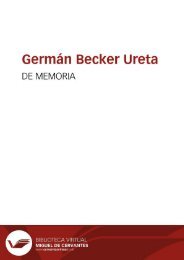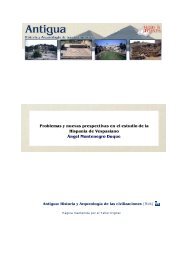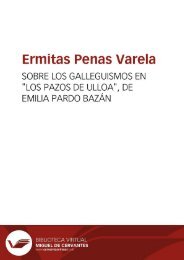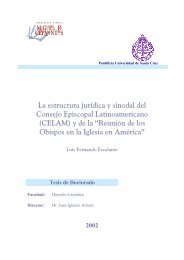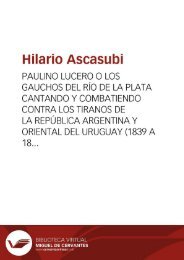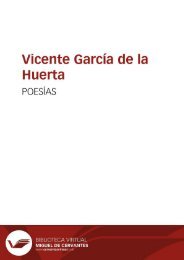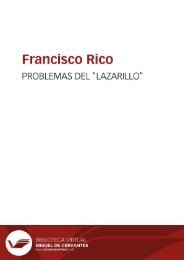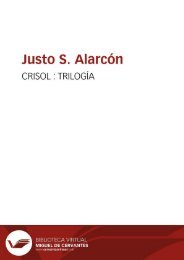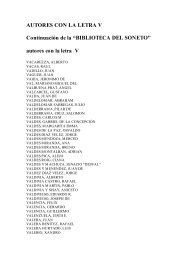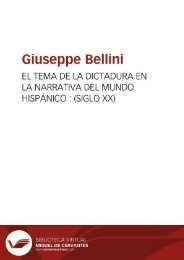You also want an ePaper? Increase the reach of your titles
YUMPU automatically turns print PDFs into web optimized ePapers that Google loves.
Anales galdosianos [Publicaciones periódicas]. Año XII, 1977<br />
sangre y médula de mujer la estopa de la muñeca, iba cobrando aborrecimiento y repugnancia a la<br />
miserable vida que llevaba bajo el poder de don Lope Garrido... » (p. 1549) Don Lope's despicable<br />
act has made her aware not only of her own ego (I exist), but of the limits on the ego (The Other<br />
exists). She begins to chafe under - the limits placed on her freedom, and to plan with Saturna the<br />
afternoon excursions to escape from Don Lope's watchful eye which eventually lead to her encounter<br />
with Horacio Díaz.<br />
Ironically, if Don Lope's seduction of Tristana and subsequent enslavement of her make her aware of<br />
her own ego and the limitations on it, he also provides her with the impetus and the means to transcend<br />
those limitations. As he ravishes her physically, he also plants deep within her psyche the desire for<br />
freedom and the seeds which eventually flower as her «sacred conviction». The narrator explains: «<br />
Era que don Lope, sin que ninguno de los dos se diera cuenta de ello, habíala hecho su discípula, y<br />
algunas ideas de las que con toda lozanía florecieron en la mente de la joven procedían del semillero de<br />
su amante y por fatalidad maestro ». (p. 1549) Tristana's abhorrence of matrimony seems patterned<br />
after Don Lope's doctrine of social anarchy (every man, and woman, for himself). But, in fact, what<br />
in Don Lope is merely an excuse to satisfy his monumental ego whenever and wherever he pleases,<br />
becomes, in Tristana, an authentic: demand for self-realization and a protest against individuals and<br />
social institutions which prevent that. It is the protest against marriage which provides the ideological<br />
framework for her subsequent struggle for self-liberation and self-realization.<br />
As Anne Ulanov explains,<br />
In the third stage of feminine development, the masculine assumes an individual and personal<br />
form, represented archetypally by a hero who, frees the daughter from bondage to her father and then<br />
establishes an equal relationship with her... The hero can be an outer man or an inner animus figure...<br />
and most often he is both, because women usually project masculine qualities of consciousness<br />
onto actual men. Thus either a 'real' man and partner assumes the freeing role of consciousness and<br />
dissolves the old form of encompassment in the unconscious, or else it can be an 'inner' man, a power<br />
of consciousness in the woman herself which accomplishes the freeing. 173<br />
It is at this point in the novel, after Tristana has experienced the first vague stirrings of self-awareness,<br />
has shaped them into an ideology of sorts, and has made the first tentative attempts to escape the<br />
tyranny of Don Lope, that Horacio appears. He has all the markings of the archetypal saviour. As he<br />
173 Ibid. , p. 255.<br />
130



